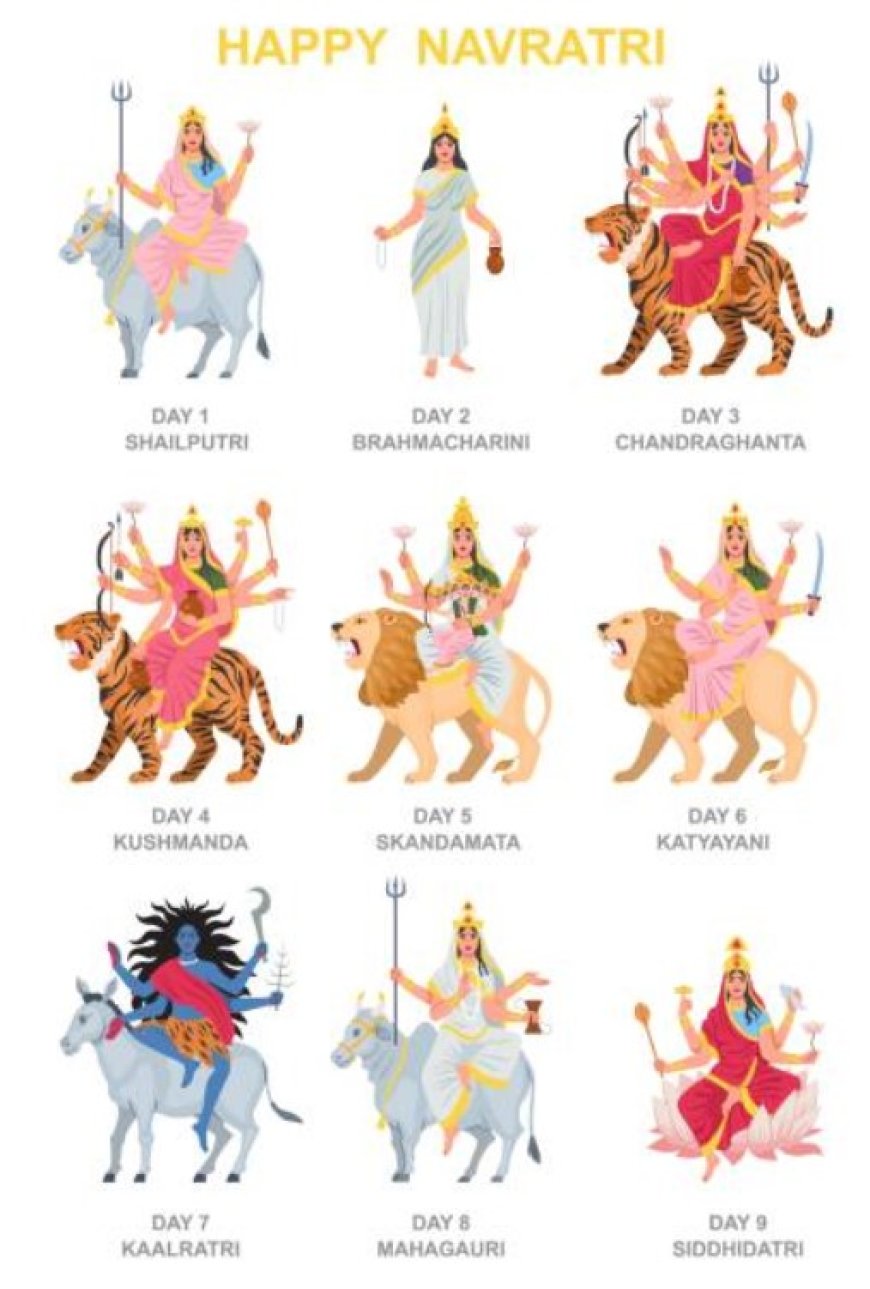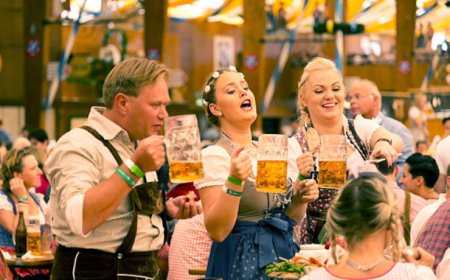The Nine Forms of the Goddess Durga: A Guide to Navaratri
Learn about the nine forms of the goddess Durga and their significance in the Navaratri festival.

In India, a nine-night celebration known as Navaratri is held in remembrance of the goddess Durga's nine manifestations. Every festival night is devoted to a different goddess form, each with its own special symbolism and meaning.
Here is a quick rundown of the nine manifestations of the goddess Durga and what each one stands for:
First day: Shailputri
The mountains' daughter is Shailputri. She is a representation of bravery and power.
Brahmacharini for Day 2
The personification of wisdom and knowledge is Brahmacharini. She is a representation of loyalty and commitment.
Chandraghanta, Day 3
The deity with the moon-shaped bell is called Chandraghanta. She represents harmony and tranquility.
Day Four: Kushmanda
The universe was created by Kushmanda. She represents wealth and abundance.
Day Five: Skandamata
The mother of the god Skanda is Skandamata. She represents kindness and motherhood.
Days 6 and 7: Katyayani
The strong warrior goddess is known as Katyayani. She represents defense and fairness.
Day Seven: Kaalratri
Dark goddess Kaalratri is who she is. She represents the corrosive force of the divine.
Day Eight: Mahagauri
The radiance of Mahagauri is the goddess. She represents virtue and chastity.
Day Nine: Siddhidatri
Siddhidatri bestows blessings. She represents spiritual excellence.
Devotees worship the matching form of the goddess Durga on each of the nine nights of Navaratri. They give offerings, pray, and sing hymns. They take part in a variety of celebrations, including the Garba dance.
The festival of Navaratri honors the strength and divinity of the female. It is an appropriate moment to consider the various facets of feminine power, including tenacity, bravery, knowledge, devotion, motherhood, compassion, safety, justice, purity, and spiritual perfection.
Here are a few ideas for Navaratri celebrations:
* **Fasting**: During Navaratri, many devotees fast. It is time to purify both the body and the psyche.
* **Prayer**: Throughout the festival, devotees offer prayers to the goddess Durga. They provide blessings and protection through their prayers.
* **Hymn-singing**: Devotees praise the goddess Durga through hymns. They do this to show their love and gratitude.
* **Visiting temples**: Worshippers of the goddess Durga go to temples to do so. They take part in a variety of rites and rituals.
* **Festivities**: The festival of Navaratri is a time for rejoicing. Devotees take part in a variety of celebrations, including the Garba dance.
Whatever your method of celebration, Navaratri is a wonderful occasion to appreciate the strength and divinity of the female.








































































































































































































